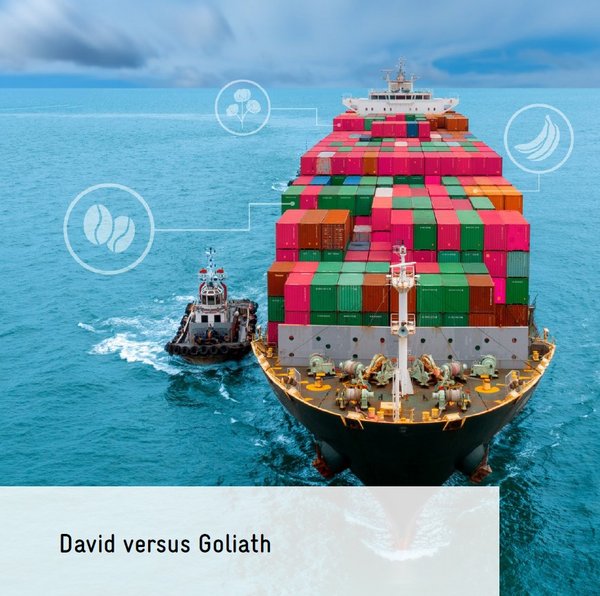 Read this article in French
Read this article in French- Share this article
- Subscribe to our newsletter
Study looks at impacts of globally traded agricultural commodities and niche products
How do globally traded agricultural commodities affect sustainability at local level in comparison to the niche products from their regions of origin? This issue is looked at in the study “David versus Goliath: Niche products and mainstream agricultural export commodities – to what extent do they promote sustainable development?”, published by the Initiative for Sustainable Agricultural Supply Chains (INA) in July 2022, which focuses on economic, ecological and social impacts.
The study analyses ten development projects run by GIZ and the Swiss development organisation Helvetas in Asia, Africa and Latin America. The analysis was conducted on the basis of interviews with key actors from the project teams and the private sector as well as a literature survey.
The results can be summed up as follows:
- At macroeconomic level, owing to the branch size and their relatively high contribution to the gross domestic product, globally traded agricultural commodities are of considerably more significance than niche products, whose contribution to the gross domestic product and to overseas trade is lower and is frequently not recorded. However, this perspective neglects marginalised rural communities for which niche products often represent important sources of income.
- In the cases analysed, niche products make a substantial contribution to conserving biodiversity.
- Contrary to expectations, the cases examined did not confirm the assumption that promoting important globally traded agricultural commodities automatically results in a larger number of beneficiaries in comparison to niche products. In fact, such products may even reach fewer beneficiaries than projects supporting smaller supply chains. However, this assessment does not consider the scaling potential of so-called mainstream products.
All in all, the study shows that there is no “good” or “bad” between globally traded agricultural commodities and niche products. Both can be regarded as complementary elements within a sustainable landscape approach. Thus the INA study yields important causes for thought regarding the discussion of future project approaches.
However, according to the study, the following has to be borne in mind:
Since it is difficult to identify and analyse all circumstances and market options in advance in the planning phase, projects promoting niche products ought to be able to react flexibly.
Biodiversity-based niche products are frequently already produced or collected in compliance with sustainability criteria.
Certification involves high costs. Care should therefore be taken that the effort and costs of certification are not too high, since the incentive for smallholders will otherwise be too low and might even inhibit sustainable use.
(INA/wi)





Add a comment
Be the First to Comment